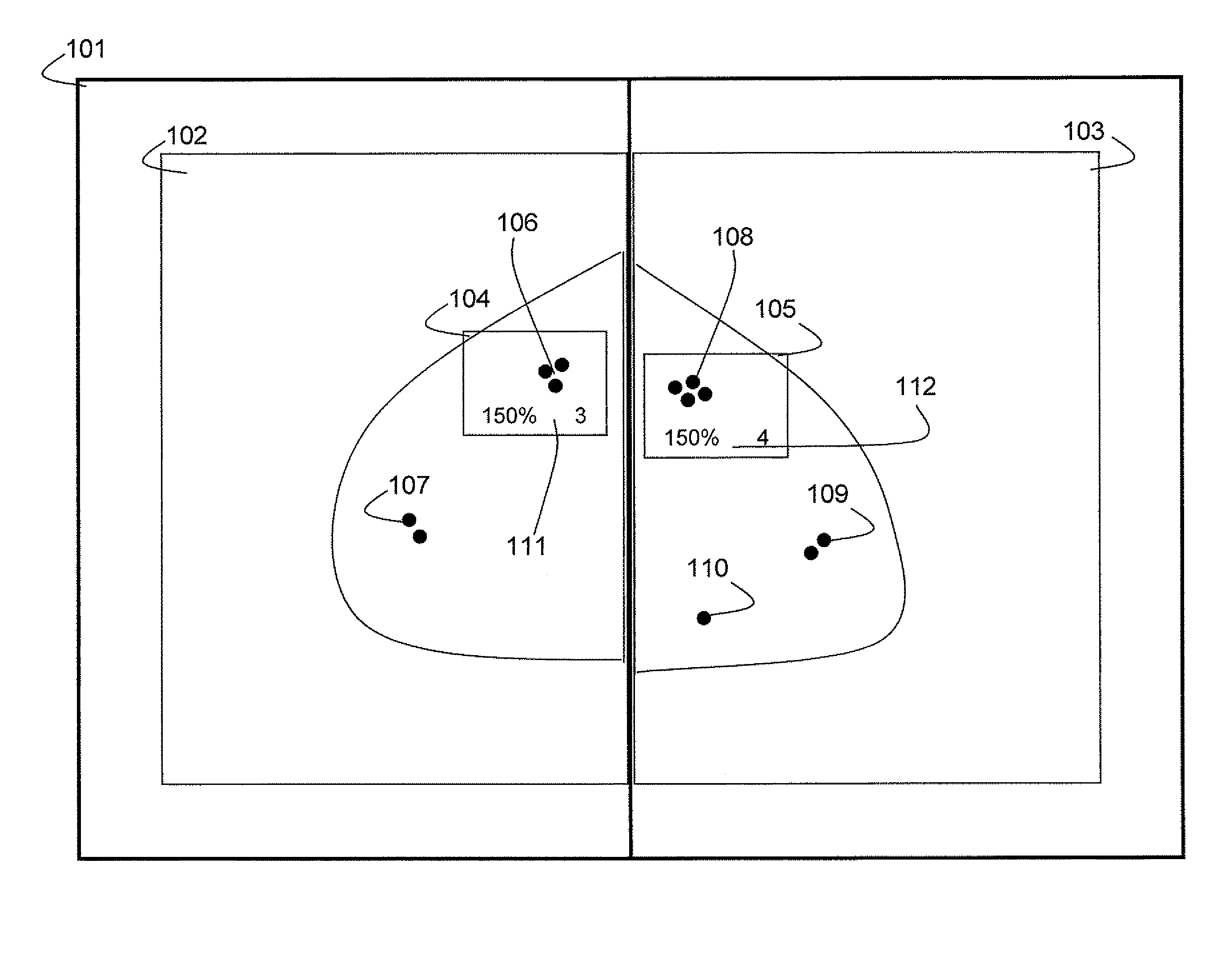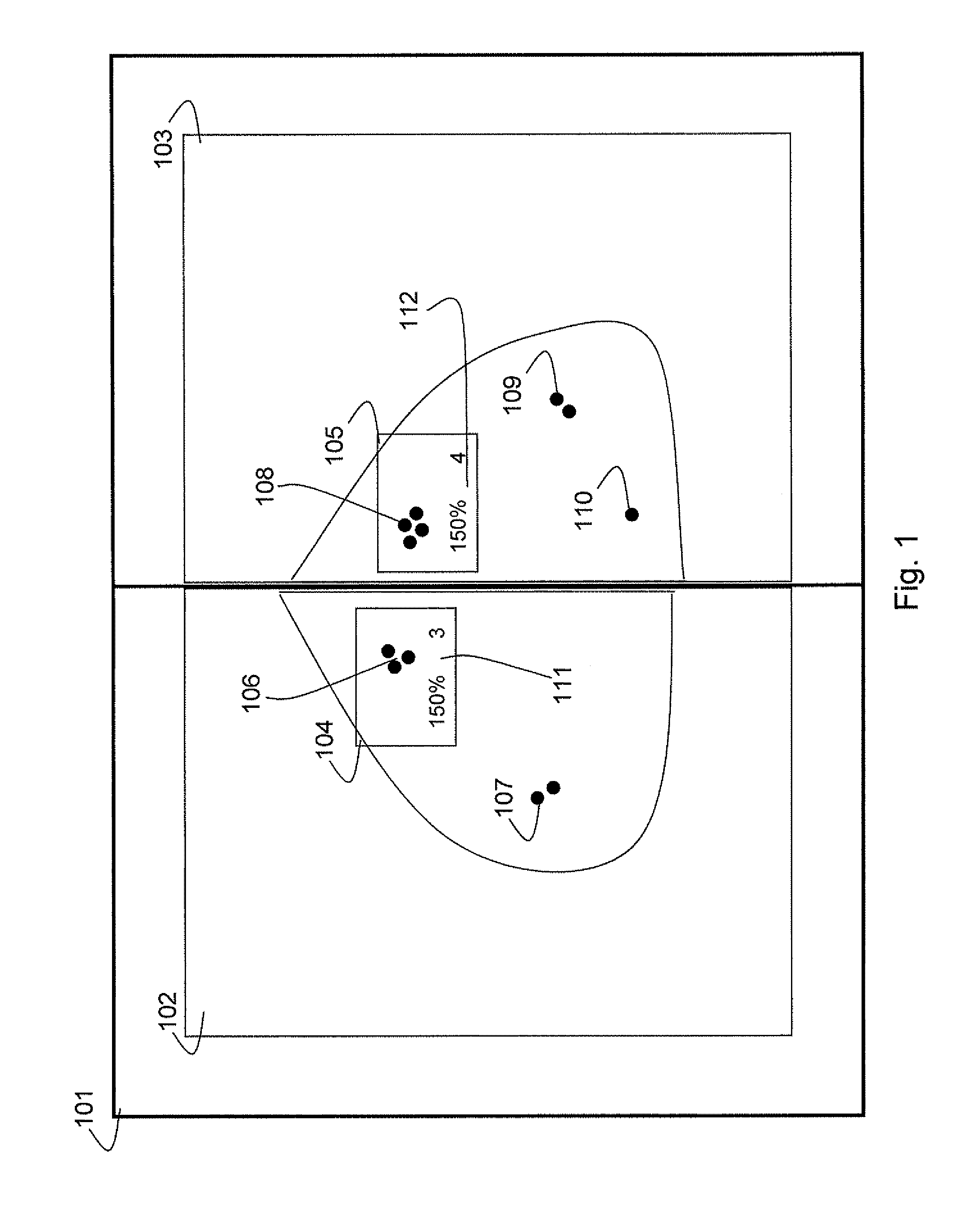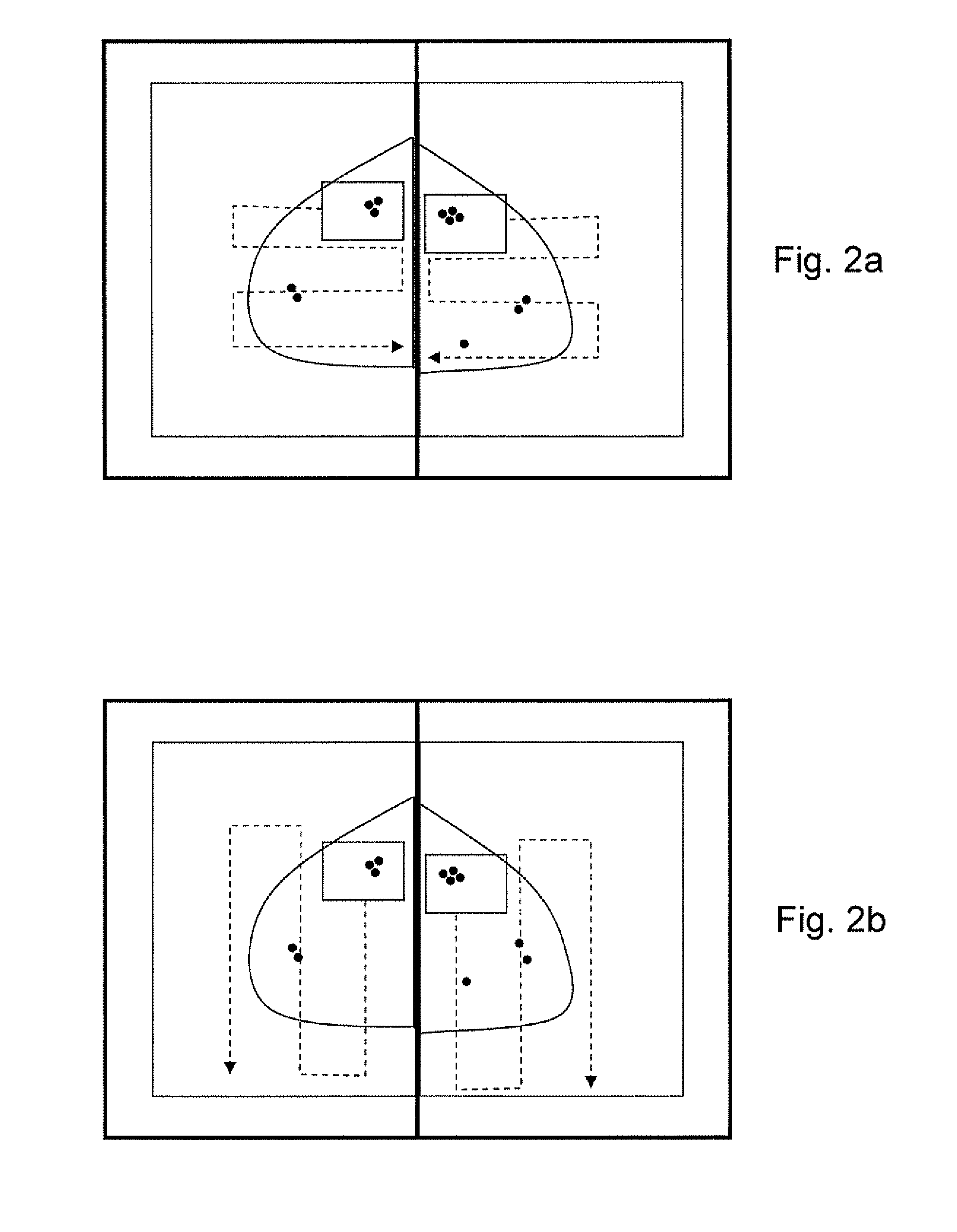Method and device for processing and presenting medical images
a technology for medical images and images, applied in image enhancement, image analysis, instruments, etc., can solve the problems that the magnification window does not necessarily move in a geometric consistent way or in accordance, and achieve the effect of facilitating the examination of such images, reducing the time to compare details, and more detailed looking at parts
- Summary
- Abstract
- Description
- Claims
- Application Information
AI Technical Summary
Benefits of technology
Problems solved by technology
Method used
Image
Examples
Embodiment Construction
)
[0088]FIG. 1 illustrates a display 101 whereon two images 102 and 103 are presented. The image 102 and 103 are related to the right breast of a woman and show a medio-lateral oblique projection of the same breast. Image 102 is the current image which was taken recently whereas image 103 is the prior image which was taken at an earlier point in time, typically a year or two earlier. The display further presents a magnification window 104 on the current image 102 and a magnification window 105 on the prior image 103. Each of the images 102 and 103 in this particular example show a number of micro-calcifications 106-110. The current image 102 shows two locations with micro-calcifications 106 and 107. The prior image 103 shows three locations with micro-calcifications 108, 109 and 110.
[0089]In this example it is assumed that the current image 102 and the prior image 103 have been processed before being presented on the display 101. Thus the images 102 and 103 have gone through a regist...
PUM
 Login to View More
Login to View More Abstract
Description
Claims
Application Information
 Login to View More
Login to View More - R&D
- Intellectual Property
- Life Sciences
- Materials
- Tech Scout
- Unparalleled Data Quality
- Higher Quality Content
- 60% Fewer Hallucinations
Browse by: Latest US Patents, China's latest patents, Technical Efficacy Thesaurus, Application Domain, Technology Topic, Popular Technical Reports.
© 2025 PatSnap. All rights reserved.Legal|Privacy policy|Modern Slavery Act Transparency Statement|Sitemap|About US| Contact US: help@patsnap.com



